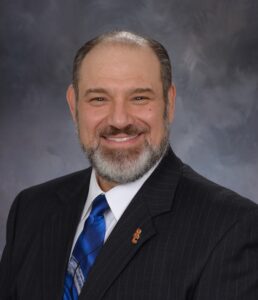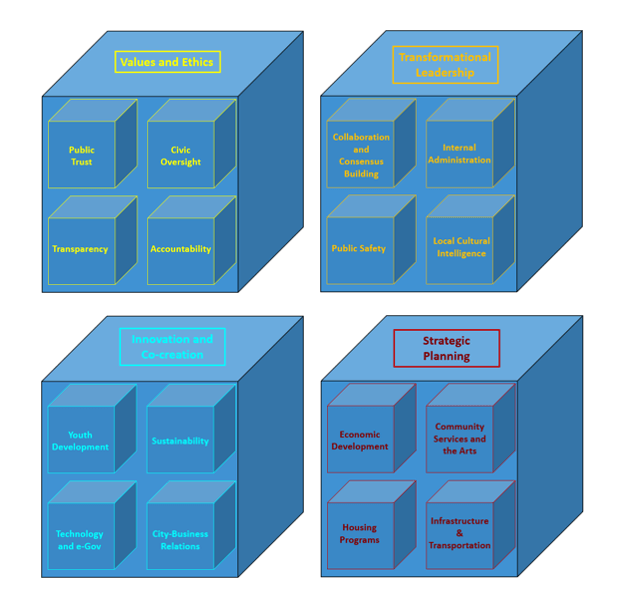Good Local Governance at a Time When it is Needed Most

Dr. Michael Falkow is an interdisciplinary and versatile executive leader with 30 years of hands-on software and systems engineering, project management, business development, collegiate teaching, and senior executive-level municipal administration experience.
The year 2020 harshly reminded contemporary society and much of the world that being human can bring with it significant and at times dramatic challenges. These obstacles come in many forms, such as natural disasters, manufactured or “manmade” events, and of course biological adversities like the Covid-19 global pandemic. History has chronicled society’s ability to handle catastrophes and other difficulties demonstrating the depth and resilience of the human spirit. There are times, unfortunately, such as the present when multiple setbacks arrive simultaneously, creating a force multiplier that ratchets things up many notches.
This perhaps once-in-a-lifetime convergence appears to have occurred at this very moment with the global pandemic, widespread public unrest, and the fragmenting of our communities across the nation. This is a delicate period when emotions have been worn thin, and divisiveness seems to grow exponentially. It takes very little to ignite fury among once civil individuals. While academics and practitioners alike might debate a multitude of prospective causal relationships involving the right, the left, the middle, mainstream media, social media, the rapid advancement of technology, and the intricate aspects of human behavior, the underlying sociological problems themselves remain, and the complexity of the environment only seems to intensify.
In this time of need, practical problem-solving will likely help us emerge from the abyss created by the compounding effects of the issues plaguing American society today. Rational thought sans the politically tainted and faction-based innuendo, however, is necessary. This is not to say the basis for these concerns should remain unaddressed. On the contrary, they must be dealt with also, or the risk of fracture resulting in irreparable harm to the fabric of our society will become too great. With that said, incremental steps forward must be taken if positive action and beneficial results are to follow.
It seems that news headlines continually overwhelm us day in and day out with issues in the national spotlight. The overused media catchphrase “if it bleeds, it leads” seems to apply across virtually all media outlets. What is missing, however, is the fact that local government is what the citizenry sees and touches nearly every day. It is also far more expansive than either of the other two governmental levels combined. Comprised of cities, counties, townships, school districts, special districts such as fire, water, library districts, transit authorities, and joint powers authorities (just to name a few), the U.S. Census Bureau Report (2017), put the number of local governments at 90,075, of which 19,495 are municipalities.
Short of participating in periodic national and state elections, receiving federal or state benefits such as social security, unemployment, or disability, or adhering to a federal or state-level mandate, nearly everything else a person does on a day-to-day basis happens at the local level. This interaction, by the way, does not have to be active, such as physically visiting city hall or other government agency or having direct contact with local government staff. The reality is that most of our interaction with local government is passive. When we drive on public streets or use public transportation, we touch local government. When we purchase products at a local business, we likely pay sales taxes and thus touch local government. When we enjoy (hopefully) a safe community, when we send our children to school (even online), when we turn on our faucet and flush our toilets, and even when we switch on and off the lights in some communities, we are again touching our local government. Just frequenting a nearby business touches local government indirectly, as that establishment likely has a city business license and adheres to local ordinances that apply in that jurisdiction. As such, and despite the constant and intense focus on federal and state-level issues, it is local governance, which focuses on the political and public administrative processes and the management of public resources for the betterment of the citizens in a jurisdiction, that really matters most.
So, what is good local governance and what do we need to obtain it? I spent more than a year (2019-2020) deeply entrenched in this topic, as it was the focus of my doctoral research in policy, planning, and development at the Sol Price School of Public Policy at the University of Southern California.
While laws, rules, and regulations traditionally stipulate how governments may operate, the act of governance is entirely different. Examining the city level specifically, my research led to the creation of a framework for good local governance, which suggests that the local political and public administrative processes must maximize the public’s interest.
This framework, as taken from my recently published doctoral dissertation,[1] involves four main building blocks each comprised of four subcomponents, that collectively creates the foundation for good governance. Looking at current events and trends today at the state and national levels, it appears that leveraging this framework using a bottom-up strategy rather than a top-down strategy might yield a more beneficial outcome. That is, start at the local level, focus on achieving good governance, and then take it up the ladder so to speak until the same concepts are apparent at the state and federal levels. While there may be some nuances at the higher levels of government that need to be addressed, the core aspects of the framework remain structurally sound.


While laws, rules, and regulations traditionally stipulate how governments may operate, the act of governance is entirely different.
MICHAEL FALKOW
The four main building blocks of the framework for effective and resilient local governance look something like this:

Each of these main blocks is comprised of four subcomponents that look like this:

The values and ethics building block contains the following four subcomponents:
- Public Trust—the idea that the government should operate in a manner that supports the needs and benefit of the public.
- Civic Oversight—how citizens interact with their government when monitoring or seeking to improve its performance.
- Transparency—unwrapping government processes so all can see.
- Accountability—Bovens et al. (2014) suggest that “principals judge the performance of their agents” (p. 2).
The transformational leadership building block contains the following four subcomponents:
- Collaboration and Consensus Building—effectiveness in leveraging public, private, and non-profit sector partners to achieve a jurisdiction’s mission, goals, and objectives.
- Internal Administration—how well a jurisdiction transforms policy (or politics) into what the citizenry sees on a day-to-day basis.
- Public Safety—the scope, range, and effectiveness of police, fire, paramedic, hospital, and emergency management.
- Local Cultural Intelligence—how one understands the uniqueness of the community.
The innovation and co-creation building block contains the following four subcomponents:=
- Youth Development—providing social and emotional learning, promoting equity, culture, and diversity, and encouraging healthy living and civic engagement.
- Sustainability—supporting, encouraging, and endorsing “the needs of the present without compromising the ability of future generations to meet their own needs” (UN World Commission on Environment and Development, 1987, p. 8).
- Technology and e‐Gov—effective use of technology to support a jurisdiction (e.g., internet, social media, radio/TV, mobile apps, etc.).
- City‐Business Relations—the synergy between the departments of a jurisdiction and the business entities within and related to it.
The strategic planning building block contains the following four subcomponents:
- Economic Development—how a jurisdiction plans for and executes endeavors promoting growth and prosperity economically, socially, and environmentally.
- Community Services and the Arts—the efforts that focus on sustainability, revitalization, culture, self‐sufficiency, and human wellbeing.
- Housing Programs—how a jurisdiction promotes housing opportunities, grants, and the like for the various socioeconomic groups living within its borders.
- Infrastructure & Transportation—the extensiveness, practicality, and support a jurisdiction gives to its sewers, water systems, roads, highways, and public transportation.
Putting all the components together creates the Conceptual Framework for Effective and Resilient Local Governance.

It is my hope that this framework for effective and resilient local governance coupled with the extensive research I did during my doctoral journey will serve to improve municipalities one city at a time and ultimately serve as a model for higher levels of government.
References
Bovens, M., Goodin, R., Schillemans, T., & Gailmard, S. (2014). Accountability and Principal–Agent Theory. In The Oxford Handbook of Public Accountability (The Oxford Handbook of Public Accountability, Chapter 16). Oxford University Press.
Falkow, M. (2020). A framework for good local governance: Achieving prosperity in an increasingly complex environment. Doctoral dissertation, which can be found here.
Report of the World Commission on Environment and Development: Our Common Future. UN World Commission on Environment and Development, 1987.
Want new articles before they get published? Subscribe to our Awesome Newsletter.

CAREER ADVICE

GOV TALK




